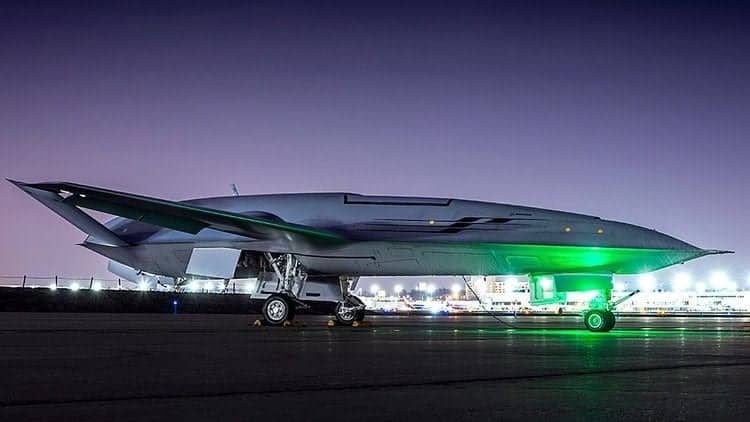![PrecisionAnalytics drone data solution]()
PrecisionHawk has announced PrecisionAnalytics Energy, a complete aerial mapping, modeling, and inspection platform that uses the latest generation of artificial intelligence and machine intelligence to automate analysis of their aerial data. Whether inspecting thousands of oil well pads or hundreds of thousands of utility towers, PrecisionAnalytics’ customers can reduce costs and improve safety in the field.
PrecisionHawk has 150-plus full-time drone pilots and more than 15,000 drone service providers in their drone pilot network. The company’s clients are using the expansive operator network to capture data over tens-of-thousands of miles of infrastructure. PrecisionHawk is also one of the only UAV (unmanned aerial vehicle) services companies that can fly BVLOS (beyond visual line of sight) – extending the reach of how far pilots can fly to collect data.
“By working closely with so many enterprise clients during the data capture phase, we have learned a tremendous amount about what they need to be successful. Our customers have consistently told us that they need a more efficient way to inspect their assets and analyze data. PrecisionAnalytics is that solution — utilizing advanced AI and machine learning to address the complexities of the energy enterprise,” said Michael Chasen, CEO of PrecisionHawk. “The results speak for themselves: drone-based aerial intelligence helps businesses reduce costs while improving the safety of their workers and insight into their assets.”
PrecisionAnalytics Energy consists of five distinct solutions:
PrecisionAnalytics — Distribution
Ground teams via today’s traditional manner of inspection typically find that 10% of distribution poles are out of compliance. In contrast PrecisionHawk, on average, found that the number is typically between 25%-30%. PrecisionAnalytics Distribution is a cloud-based system that uses machine learning to automate the identification of distribution pole and component damage. It cross-references the uploaded imagery against distribution pole data and flags issues, producing a collection of imagery prioritized by asset health.
PrecisionAnalytics — Transmission
With PrecisionAnalytics Transmission, utilities can replace dangerous helicopter inspections, reducing inspection costs by up to 28%, and gain unprecedented insight into the condition of assets. The platform applies machine vision to identify areas of concern such as cracked insulators, corrosion or structural issues, and aggregates collected data to provide infrastructure statistics, vegetation maps, detailed views and historical record keeping. For one top 50 American utility, PrecisionHawk’s drone services increased the areas of concern identified by 42%.
PrecisionAnalytics — Wind
Using PrecisionAnalytics Wind, some of the world’s leading turbine OEMs and servicers have reduced climbs — today’s traditional manner of inspection — by 50% and the cost of their inspections by 80%. PrecisionAnalytics Wind offers intuitive reporting features and AI-driven change detection that can identify issues such as leading-edge corrosion, lightning strike damage, small cracks and wearing, gel coat degradation and UV radiation damage on an entire fleet or a particular blade. With PrecisionAnalytics Wind, turbine operators can reduce hazardous man hours, accelerate analysis, reduce time-to-value of data and increase uptime through preventative maintenance.
PrecisionAnalytics — Solar
PrecisionAnalytics Solar can measure the condition of an entire fleet or a single module. With purpose-built machine learning, the platform detects issues such as cell-level defects, bad diodes, reverse polarity, storm damage, rack shifts and foreign objects. Users of PrecisionAnalytics Solar can integrate the solution with their existing asset management program, reducing the time required to conduct inspections—today, traditionally done by plane flyovers or by foot—by up to 90%, identifying up to 10 times as many issues and predicting future outages so that they can prioritize needed repairs.
PrecisionAnalytics — Oil and Gas
Oil and gas supermajors are using PrecisionAnalytics to replace dangerous manned aircraft inspections with drone deployments and hours of tedious image review with machine intelligence, ultimately gaining unprecedented insight into the condition of critical assets. The solution offers leading thermal, infrared and LiDAR sensors, a methane detection laser and optical gas indicators that can capture asset conditions at a single point of time. With geospatial data that does not compromise the assets themselves, managers can integrate with existing enterprise resource planning systems, report their findings and take action.
PrecisionHawk will debut PrecisionAnalytics at the AUVSI XPONENTIAL 2019 trade show in Chicago.
The post PrecisionAnalytics Drone Data Platform Delivers Insights for Energy & Utility appeared first on Unmanned Systems Technology.




















